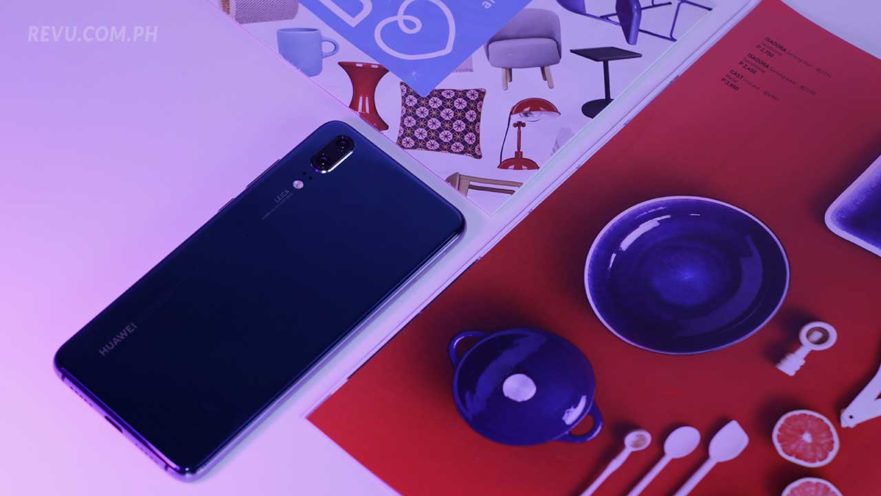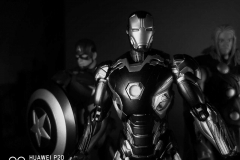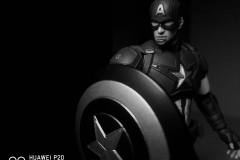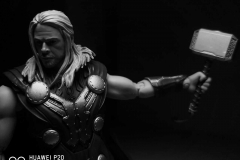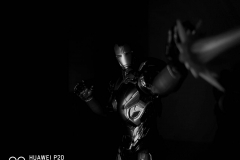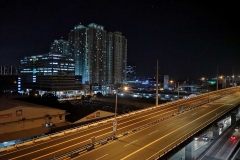After their global launch last month, the Huawei P20 and P20 Pro are now available in the Philippines. Both phones get a trendy redesign featuring a display cutout or notch on their top bezels to go along with glass backs, with the option of a gradient finish.
As we’ve written in this space before, the P20 and P20 Pro also have splendid cameras that were awarded the highest scores ever by trusted camera-reference website DxOMark. Yes, they outperformed even the Apple iPhone X, Samsung Galaxy S9+, and Google Pixel 2 in the same tests. And yes, we also do think these phones live up to expectations, imaging-wise, but the rest of our observations will come later.
SEE ALSO: Night shots: Samsung Galaxy S9+ vs Apple iPhone X
Pricing details have been revealed in the past, and they’re surprisingly lower than what we had in mind. The Huawei P20 will go for P34,990 (about $669) in the Philippines. The premium goes up to P44,990 ($860) for the P20 Pro with a triple-camera array and 40 megapixels on the main color sensor.
Huawei brings the black, blue, and gradient purple or Twilight color versions of the P20 series here. We wish more shades would be offered in the future, though. The pink-gold variant, for one, looks great.
In the meantime, we’ll focus on this blue Huawei P20 we have in our hands. It’s got glass with tapered edges on the front and back, which are held together by a 7.7mm-thick metal frame with a shiny finish to match the rest of the phone’s outward appearance. In a nutshell, it’s a flashy piece of hardware that reminds us so much of the Apple iPhone X.
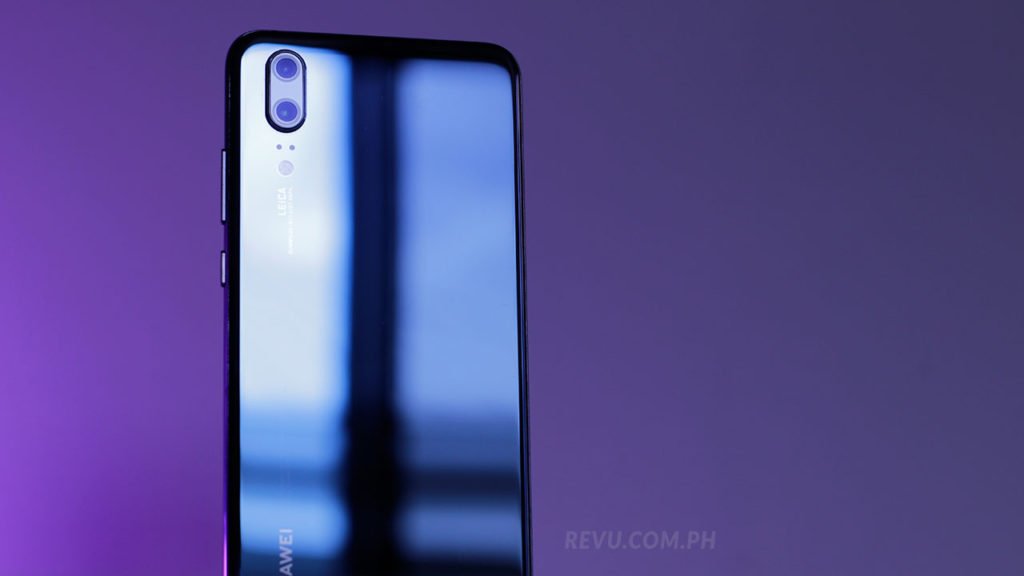
Huawei P20: A flashy piece of hardware
The feel is similar, too. With curves on the front and back glass and without any sharp edges pressing against our fingers, gripping the phone feels natural. And in case you’re curious about the P20 Pro, we actually prefer using the regular P20, having used both for a good bit of time.
Of course, the more compact design means a smaller screen, among other things, but we don’t mind so much. The 5.8-inch display on the P20 is more than enough for our needs, as many of you might relate to. Speaking of the front panel, there’s a notch on the top bezel that crams the selfie camera, LED notification light, earpiece that doubles as a secondary speaker, and proximity and ambient-light sensors into a relatively tight space.
There’s a fingerprint reader down on the chin of the Huawei P20, and you can also use it to go to the home screen from any app. The sensor works fast and misses are hard to come by. Alternatively, you can unlock the phone using the front-facing camera, but don’t expect the same accuracy in low light.
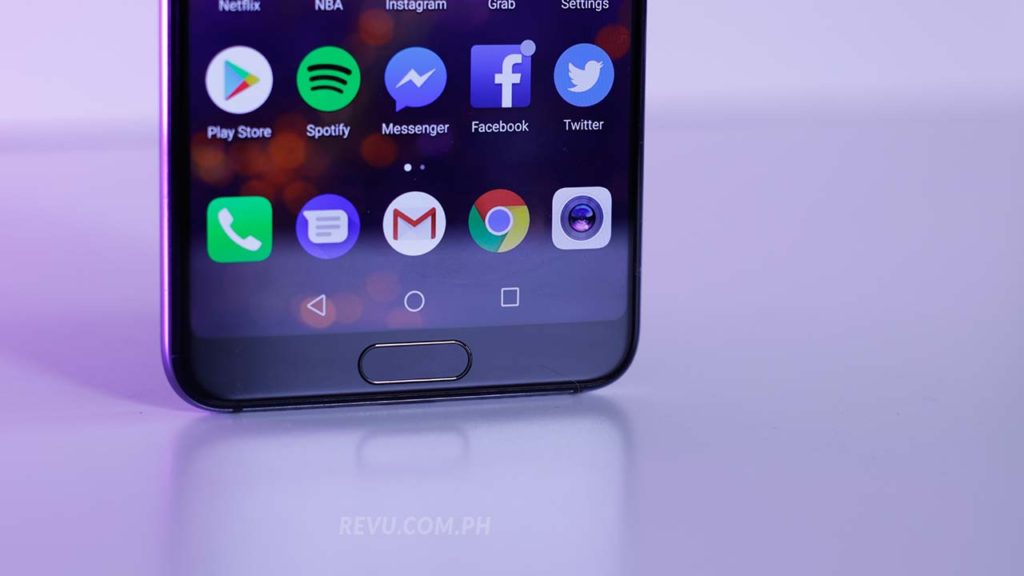
On the chin of the Huawei P20 is a fingerprint sensor, which works fast and rarely misses.
Similar to the iPhone X and other iPhones in recent years, there’s an option to wake the screen when you lift the device up, which will make unlocking it easier and faster when used in combination with face unlock.
The P20 has bottom-facing speaker holes, as well as USB Type-C connection with fast charging. If you own the necessary cable or cables, you can hook up your unit to an external display with HDMI input (your monitor, for example) and use it like a computer replete with a desktop interface.
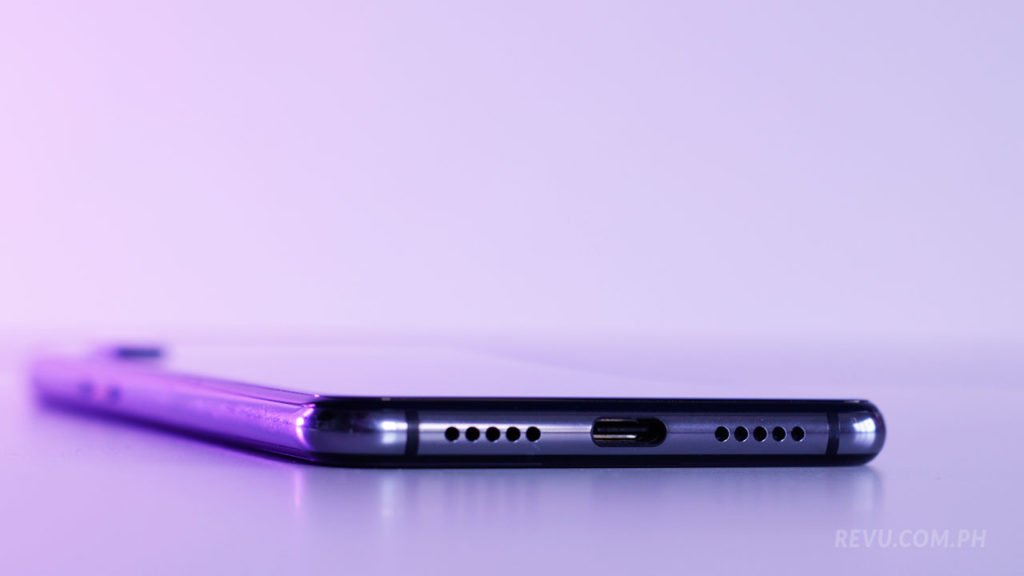
The Huawei P20 has bottom-facing speaker holes, as well as USB Type-C connection with fast charging.
Another thing worth noting is that the volume and power buttons are all located along the right cheek, with the latter having a tiny red marking to immediately distinguish itself from the volume rocker. It’s a nice touch, and we hope this design trend gets carried over to future Huawei devices.
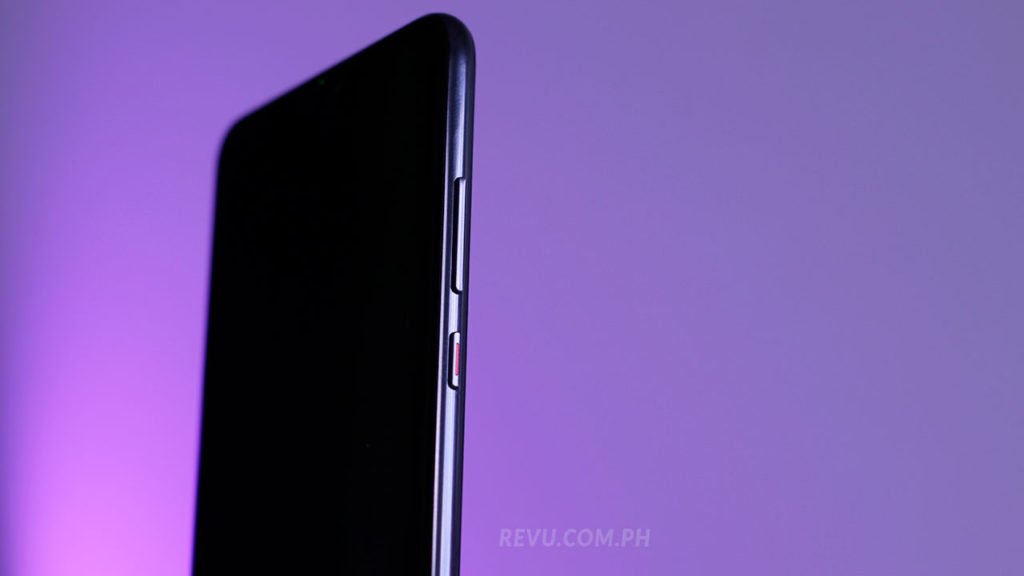
The volume and power buttons are all located along the Huawei P20’s right cheek, with the latter having a tiny red marking to immediately distinguish itself from the volume rocker.
Regarding its exterior, the P20 indeed has a lot going for it. A headphone jack isn’t one of them, unfortunately. But to Huawei’s credit, the retail box does include a pair of quality Type-C earbuds and a 3.5mm-to-Type-C adapter.
The LCD display doesn’t disappoint at all. In fact, it’s easily one of the best LCDs on any phone right now. It’s comparatively more vibrant than the others while keeping the colors on the natural side. It can get very bright and maintains its color accuracy when viewed off-axis and from the side, making it great for outdoor viewing. The extra-tall 18.7:9 aspect ratio makes video playback and gaming particularly enjoyable.
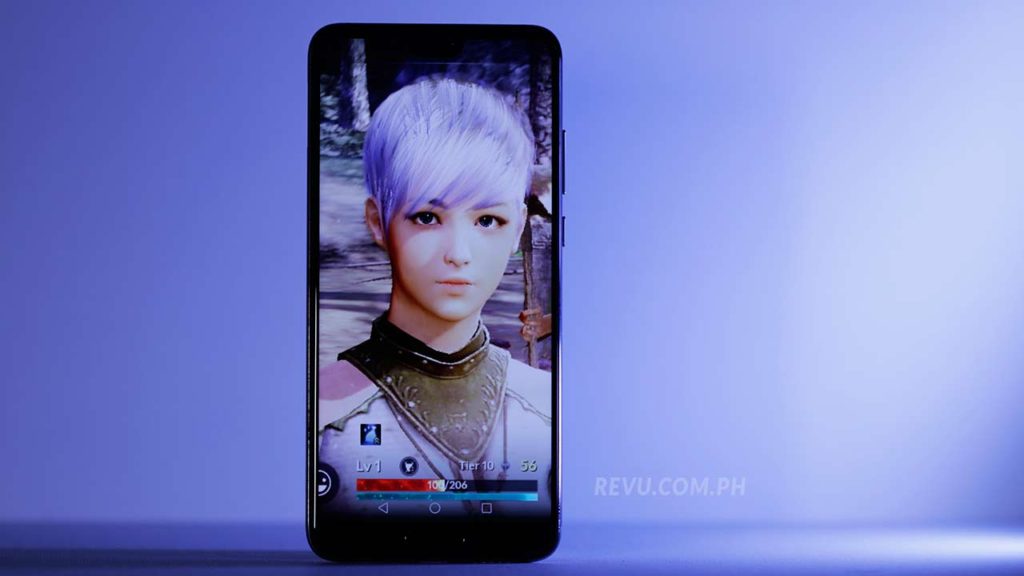
The extra-tall 18.7:9 aspect ratio of the Huawei P20’s screen makes video playback and gaming particularly enjoyable.
Huawei decided to stick to a 1,080p resolution instead of quad HD, like on other flagships, but the 2,240 x 1,080 panel is definitely sharp enough. It’s fine, even by today’s standards, though a higher pixel density will help on those rare occasions you’re viewing ultra-HD or VR content.
As for the notch, well, it’s not as distracting as when you’re operating the Huawei P20. The software interface covers the notch by using a black background on the top portion of the screen whenever necessary, so it doesn’t get in the way when you’re watching a video in landscape mode, nor when you’re playing a game with the phone held sideways.
If you simply never want to see the notch regardless of what you’re doing or how you’re holding the device in your hand, Huawei offers the option of leaving the black bar at the top of the screen, until you decide to take it out. It’s a nifty addition, and there’s no doubt display purists will find it useful. We also like that you can lower the resolution of the display and adjust the color temperature from cold to warm as per your comfort level, through software.
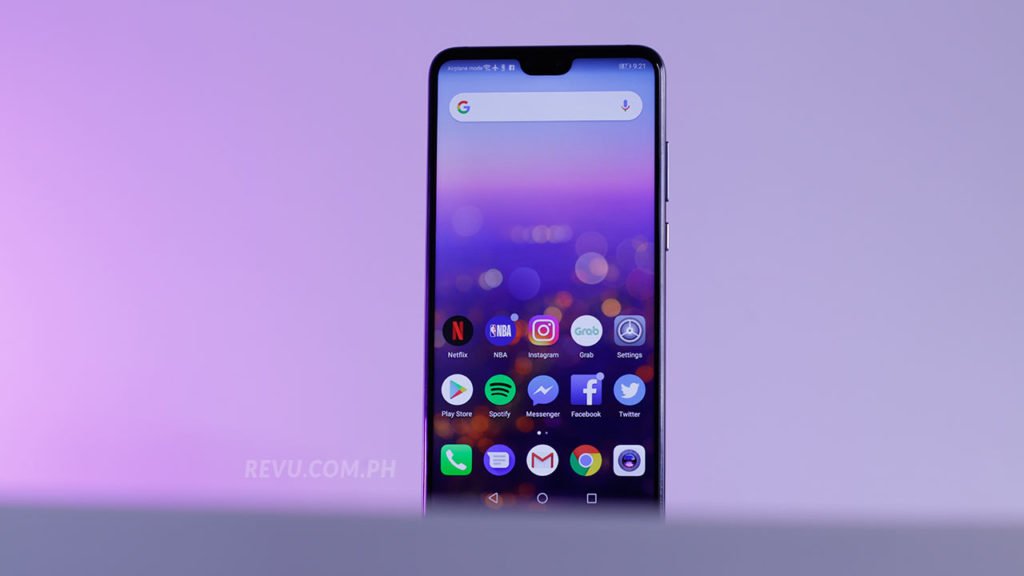
Prefer not to see the Huawei P20’s notch?
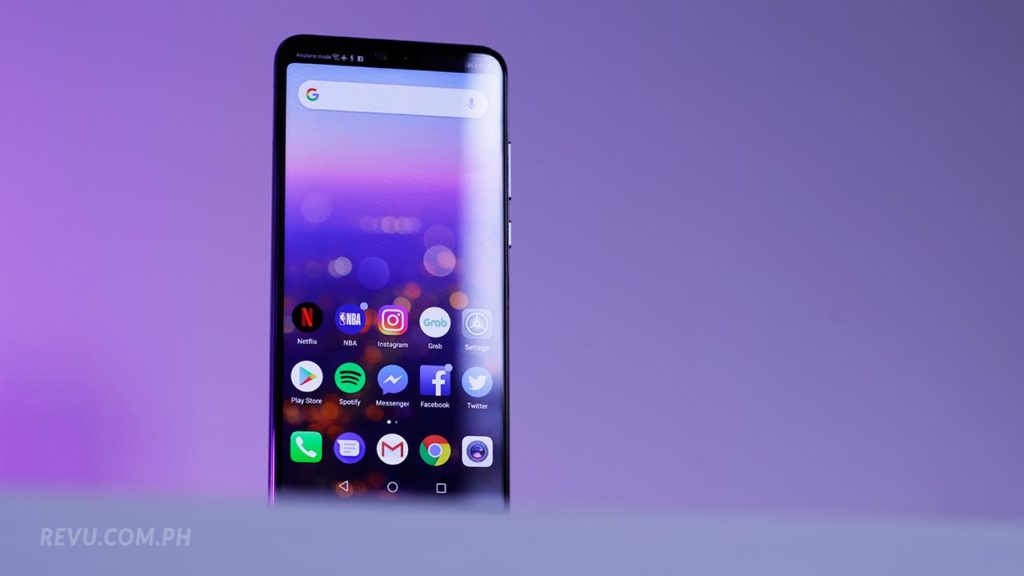
The Huawei P20’s software interface covers the notch by using a black background on the top portion of the screen whenever necessary.
As you might have heard before, the same HiSilicon Kirin 970 chipset from Huawei that fuels the company’s Mate 10 series can be found inside the Huawei P20 (and P20 Pro). It’s still an excellent option in early 2018, and this phone will happily run anything you could throw at it at the highest settings, heavy games such as NBA 2K18 and PUBG Mobile included.
NBA 2K18 on the Huawei P20
Perhaps more impressively, Black Desert Mobile, a console-quality Korean MMORPG, runs at the highest possible quality on this thing without any noticeable frame drops.
Black Desert Mobile on the Huawei P20
Apps load almost instantly. Multitasking is smooth, and we had no problems swiping around in the Android Oreo-based operating system. Thermal management is good, with the P20 only getting warm during intensive gaming.
But arguably the biggest talking point internally is the dedicated neural processing unit within the Kirin 970 for carrying out AI-related applications like voice command and object detection using the cameras on the Huawei P20. This functional core is also designed to adapt to your usage patterns and allocate processing power and memory accordingly.
READ ALSO: New NBA 2K Mobile game is a lot like NBA 2K18, but free
In practice, however, the biggest benefit could be for the battery life, as there’s less computing work for the main CPU cores to accomplish. It certainly shows on our unit; its 3,400mAh pack typically carries us through a work day on a single charge.
And as with earlier devices from Huawei’s premium catalog, the P20 charges incredibly quick using the supplied 22.5-watt wall adapter, giving us that lovely combination of a battery that doesn’t die on the commute home from work and takes a short time to fill back up.
Camera
However, of all the things we could talk about, no doubt the most exciting bit about this handset is its ability to take fantastic photos that might compare favorably with dedicated cameras. We’ve shown you what the Huawei P20 Pro is capable of, imaging-wise, in a recent post. You may have read about DxOMark gifting the P20 and P20 Pro the highest scores ever for a main camera system on a smartphone.
Those glowing numbers and our previous observations are consistent with what we’ve seen on the P20. Despite lacking the “Pro” branding — and a third camera — and coming in much cheaper than its rivals from Samsung and Apple, we found the Huawei P20 to be a better all-around shooter than all others except one (hello, P20 Pro!).
READ ALSO: Samsung Galaxy S9, Galaxy S9+ vs. Huawei P20, P20 Pro
But even then, after shooting with the P20 and P20 Pro side by side earlier, we really couldn’t see much difference between the results. The P20 is just as effective and produces brilliant stills with zero effort.
Glance over the specs, you’ll find a 12-megapixel color camera and a 20-megapixel monochrome one to boost the details captured by the color sensor. When zooming in, the monochrome shooter is a factor, too, offering up to 2x hybrid zoom and allowing for a bigger jump in magnification. It can likewise work independently from the primary camera when shooting stills in Monochrome mode.
Sample black-and-white photos captured on the Huawei P20
Sample colored pictures taken with the Huawei P20
Images look pleasingly detailed on our computer screens, while Huawei’s camera software provides a vibrant finish to colors if left alone to do its job. Diving into the impressive Portrait mode will add a DSLR-like effect to your photos, resulting in crisp silhouette details in the foreground and a blurred background.
[sciba leftsrc=”https://www.revu.com.ph/wp-content/uploads/2018/04/Huawei-P20-sample-photo-review-price-specs-Revu-Philippines-without-portrait-mode-bokeh.jpg” leftlabel=”No bokeh effect” rightsrc=”https://www.revu.com.ph/wp-content/uploads/2018/04/Huawei-P20-sample-photo-review-price-specs-Revu-Philippines-portrait-mode-bokeh.jpg” rightlabel=”With bokeh effect” mode=”horizontal” width=””]Huawei P20 sample photos: Normal mode (without bokeh effect) vs Portrait mode (with bokeh effect)
Sticking to Photo mode (or auto), meanwhile, will take the guesswork out of fiddling with the controls to shoot a variety of subjects. The phone’s camera-assistant software will decide which settings to use for your shot — unless you override it manually. The software can recognize 19 different scenes and objects.
The Huawei P20 can detect 19 different scenes and objects. (Video captured on the P15,990 [$310] Huawei P20 Lite)
For filming home movies, the Huawei P20 offers 4K video at the usual 30 frames per second and super-slo-mo footage at 960 frames per second, although it maxes out at 720p resolution instead of full HD. Image stabilization is available at up to 1080p, so you’ll want to be as still as possible when recording at 4K to avoid shaky video.
Those who want good snaps of their faces will be pleased with the 24-megapixel camera on the P20. It has almost the same feature set as the system on the back and is fitted with f/2.0 aperture lens. That way, you can take brighter selfies where lighting is a problem, like at night or in a dimly lit restaurant. When in a bind, you can also use the screen-flash feature.
Final thoughts
There’s no doubt about it: The Huawei P20 is a smashing phone to own, as likable as anything we’ve seen from the stables of Samsung and Apple. Fast, stylish, and comfortable to use, it delivers a flagship experience at an excellent price. We haven’t even gotten to all the ways its cameras have made an impression.
The Huawei P20 is a smashing phone to own, as likable as anything we’ve seen from the stables of Samsung and Apple. Fast, stylish, and comfortable to use, it delivers a flagship experience at an excellent price.
And while it does cut some luxuries of the Pro model, it’s no less compelling than its more souped-up other half, especially when you consider that there’s a P10,000 ($194) difference between the two.
Huawei P20 specs
- 5.8-inch LCD display; 2,244 x 1,080 resolution (18.7:9)
- HiSilicon Kirin 970
- 4GB RAM
- 128GB expandable storage
- Dual rear cameras (12MP color + 20MP monochrome) with dual-tone LED flash
- 24-megapixel front camera
- 3,400mAh battery
- Fingerprint sensor
- Android 8.1 Oreo
Share this Post


